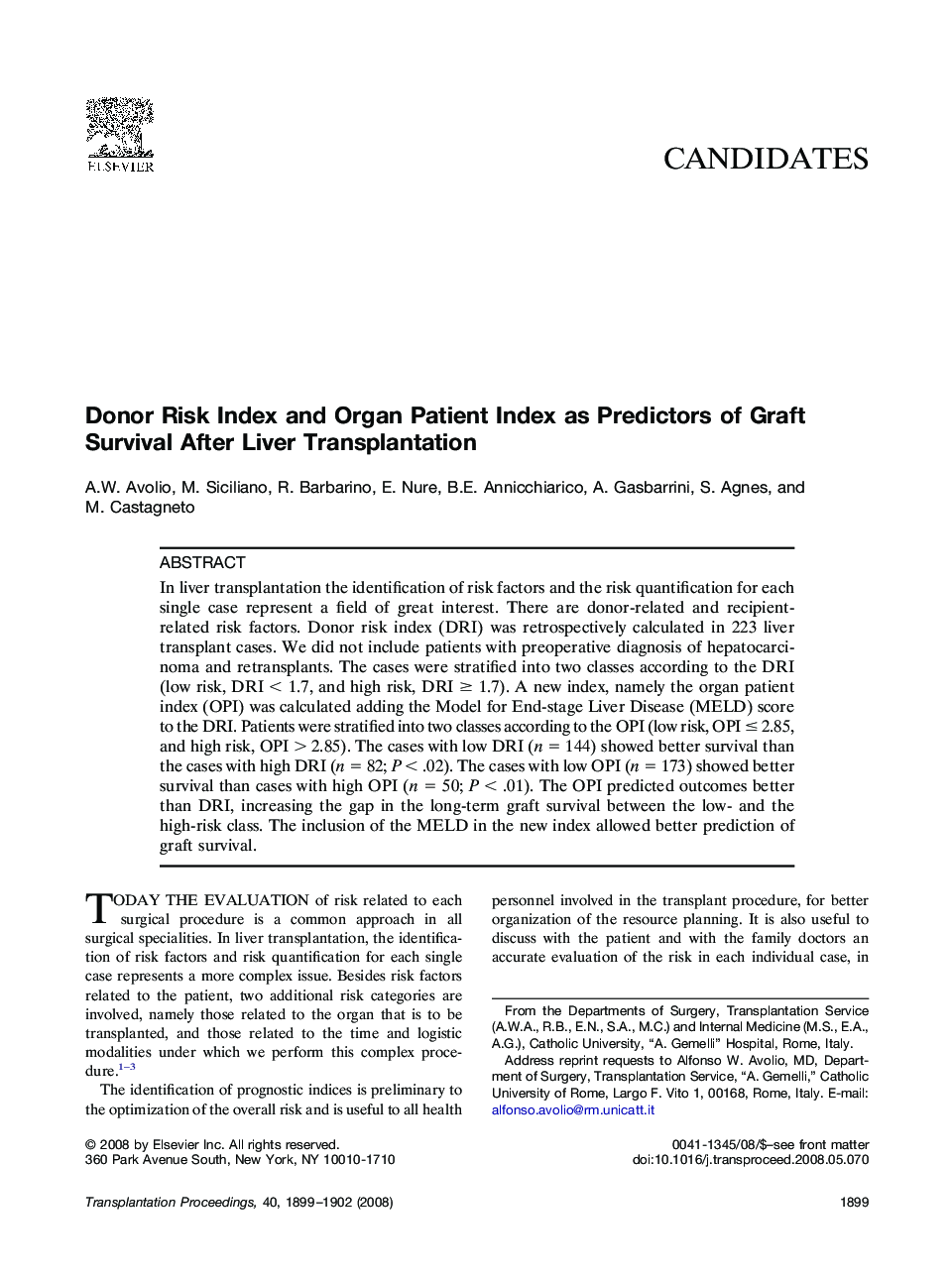| Article ID | Journal | Published Year | Pages | File Type |
|---|---|---|---|---|
| 4260279 | Transplantation Proceedings | 2008 | 4 Pages |
In liver transplantation the identification of risk factors and the risk quantification for each single case represent a field of great interest. There are donor-related and recipient-related risk factors. Donor risk index (DRI) was retrospectively calculated in 223 liver transplant cases. We did not include patients with preoperative diagnosis of hepatocarcinoma and retransplants. The cases were stratified into two classes according to the DRI (low risk, DRI < 1.7, and high risk, DRI ≥ 1.7). A new index, namely the organ patient index (OPI) was calculated adding the Model for End-stage Liver Disease (MELD) score to the DRI. Patients were stratified into two classes according to the OPI (low risk, OPI ≤ 2.85, and high risk, OPI > 2.85). The cases with low DRI (n = 144) showed better survival than the cases with high DRI (n = 82; P < .02). The cases with low OPI (n = 173) showed better survival than cases with high OPI (n = 50; P < .01). The OPI predicted outcomes better than DRI, increasing the gap in the long-term graft survival between the low- and the high-risk class. The inclusion of the MELD in the new index allowed better prediction of graft survival.
